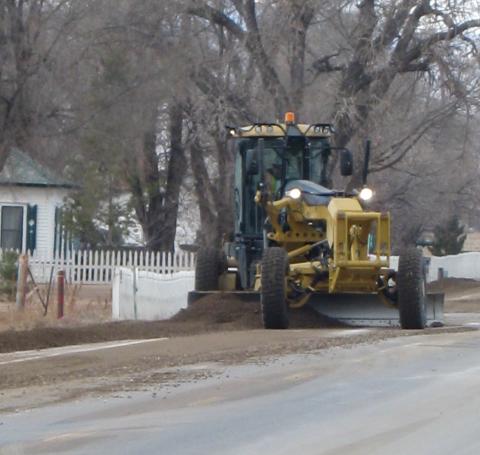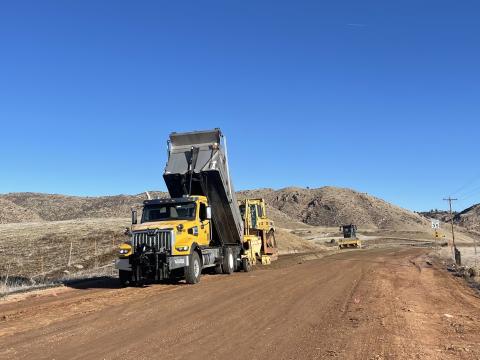Roadway aggregate in Larimer County

What is aggregate?
Aggregate is crushed rock, gravel, or sand mined from quarries and pits. You might hear it called “gravel” or “base course.” It’s necessary for building and maintaining roads:
Concrete roads: Gravel aggregate is mixed with cement and water to create strong, paved surfaces.
Asphalt roads: Gravel aggregate is mixed with liquid asphalt to create a durable, flexible road surface
Under concrete and asphalt pavement: Gravel aggregate is spread as a stable base layer to prevent cracking and shifting.
Non-paved roads: Gravel aggregate is used as a surface layer to make them stronger, more durable, and weather-resistant.
Although aggregate is used for a variety of purposes, the focus of this website is the aggregate used to maintain non-paved roads in Larimer County.
Aggregate and Larimer County’s roads
Aggregate is essential for all types of roads in Larimer County:
Rural neighborhood streets
Mainline county roads that provide access to properties and allow for the movement of goods and services
Roads that provide access for recreational activities.
Aggregate is the material that helps us get where we need and want to go.

These roads rely on a gravel surface to stay durable and drivable in all weather conditions. Without it, these roads would become muddy, rough, and unreliable. Maintaining them with a gravel surface is critical.
Keeping non-paved roads in good shape
New gravel is added to keep non-paved roads in good condition because, over time, the gravel wears down. Gravel surfacing material, like any other surface material, has a limited lifespan and needs to be replaced periodically.
Larimer County resurfaces about 8.5 miles of non-paved roads with fresh gravel annually. That is about 40,000 tons or 3,075 truckloads of gravel spread over Larimer County roads every year to keep them safe and drivable.
 How is Road & Bridge securing more aggregate?
How is Road & Bridge securing more aggregate?
